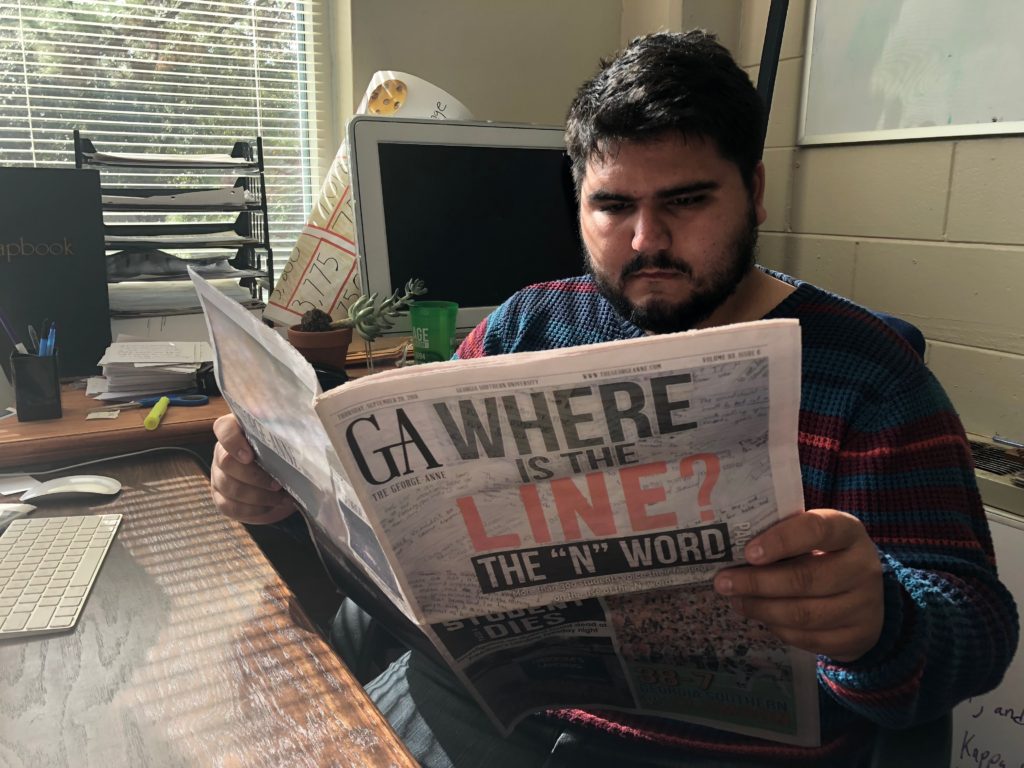‘Research in Action’ at CMA’s New York Conference
The College Media Association will host its first annual undergraduate research panel at the CMA Spring Convention in New York this year. “Research in Action” will feature students from three universities who will present their works and compete for CMA’s first Apple Award in Undergraduate Research.
 Cheyenne Mathews, from University of Alaska Anchorage, will present “Media Literacy Education in Alaskan Schools: A Content Analysis of Alaskan School Districts’ Curriculum.” This content analysis examines media literacy instruction and the role of journalism offerings in the largest Alaskan school districts.
Cheyenne Mathews, from University of Alaska Anchorage, will present “Media Literacy Education in Alaskan Schools: A Content Analysis of Alaskan School Districts’ Curriculum.” This content analysis examines media literacy instruction and the role of journalism offerings in the largest Alaskan school districts.
Brandon Liemer, from Florida Atlantic University, will speak on “The Podcast Era: Emerging New Media to Enhance Academia.” His study explores the use of podcasts as a new, emerging and contemporary form of media. He employs survey research to examine student interest in podcasting and the possibility of including it in communication curricula.
Valerie Miller and Henry Tasker are from Virginia Wesleyan University. They will co-present “Digital Deception: Examining Source Credibility and Native Advertising in Online News Editorials.” This experiment assesses college students’ ability to identify native advertising and corresponding media literacy and source credibility levels.
The session, at 10 a.m. Thursday, March 7, in Marquis B of the New York Marriott Marquis, will include Kelly Messinger from Capital University as the panel moderator. Elizabeth Smith from Pepperdine University will serve as the discussant.
 The adviser emailed the student, a senior broadcasting major poised to graduate from college in a mere few weeks, and asked her to stop by the adviser’s office before class the following morning. The student inquired in her email response about the purpose of the meeting. The adviser told her that she had some concerns about the story submitted that week.
The adviser emailed the student, a senior broadcasting major poised to graduate from college in a mere few weeks, and asked her to stop by the adviser’s office before class the following morning. The student inquired in her email response about the purpose of the meeting. The adviser told her that she had some concerns about the story submitted that week. College media advisers are educators who teach students to become responsible citizens in a noisy world in which a multitude of media so persuasively point in the opposite direction. Regardless of the specific media entity advisers work with, there are common opportunities and challenges. College student-produced publications and broadcast operations have much in common with the quickly expanding population of student-run communications agencies. There’s much we can learn from each other. We must work together to strengthen our educational presence and show clearly our public value in these tumultuous times.
College media advisers are educators who teach students to become responsible citizens in a noisy world in which a multitude of media so persuasively point in the opposite direction. Regardless of the specific media entity advisers work with, there are common opportunities and challenges. College student-produced publications and broadcast operations have much in common with the quickly expanding population of student-run communications agencies. There’s much we can learn from each other. We must work together to strengthen our educational presence and show clearly our public value in these tumultuous times.  This study explores the quantifiable and cultural changes that occurred at one large college student media outlet during the five years after it combined several distinct media to form a fully “integrated” newsroom. The study draws on participant observation, in-depth interviews, examinations of web and social media analytics and written analysis performed by student leaders to identify key objectives and outcomes. It explores obstacles, both cultural and technological, that arose, and it identifies opportunities for other college media to serve audiences using a similar approach.
This study explores the quantifiable and cultural changes that occurred at one large college student media outlet during the five years after it combined several distinct media to form a fully “integrated” newsroom. The study draws on participant observation, in-depth interviews, examinations of web and social media analytics and written analysis performed by student leaders to identify key objectives and outcomes. It explores obstacles, both cultural and technological, that arose, and it identifies opportunities for other college media to serve audiences using a similar approach.


 College Media Review Black Friday doorbuster
College Media Review Black Friday doorbuster Peer-reviewed manuscripts covering topics such as teaching media accuracy, developing tools for cross-cultural student journalism and understanding the Trump effect on student media are included in the 2018 volume, but the price extends to all research annuals dating back to 2012.
Peer-reviewed manuscripts covering topics such as teaching media accuracy, developing tools for cross-cultural student journalism and understanding the Trump effect on student media are included in the 2018 volume, but the price extends to all research annuals dating back to 2012.